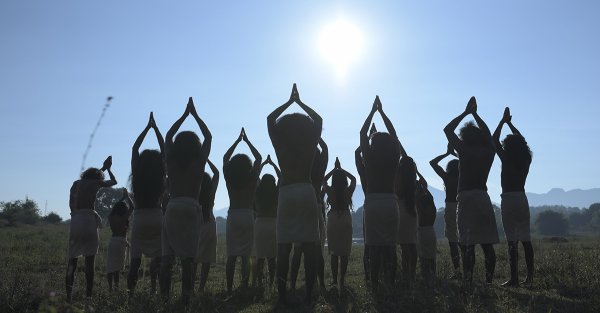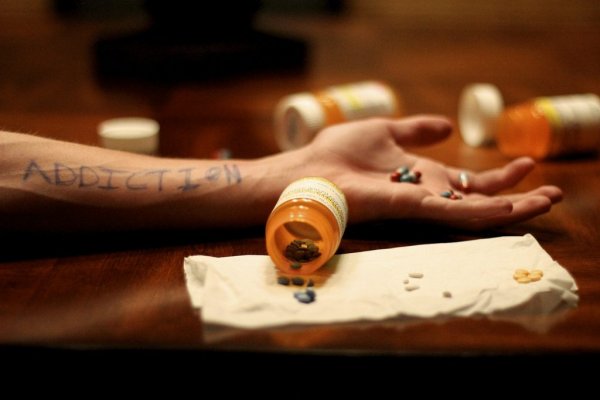
Ratnayake (39) initially thought she was having a heart attack.
“When my mother died of a heart attack, the doctors said that heart problems run in the family,” she said. “The pain was concentrated on my chest, and it kept getting worse. It was hurting so much that I was having trouble breathing. The first thing I thought of was my mother — I was sure I was having a heart attack like her.”
While walking towards the sick room at the apparel factory where she works, Ratnayake fainted. She was later taken to a hospital in Gampaha, where a doctor, suspecting pneumonia, carried out a PCR test that returned positive for COVID-19, making Ratnayake Patient Zero of the Minuwangoda COVID-19 cluster.
While her symptoms only became very severe in early October, Ratnayake began to feel unusually fatigued in late September.
“I had a headache, and the pain spread to the rest of my body. It started hurting all over,” she said. It was a Monday, the day after Ratnayake’s day off, when she began experiencing mild symptoms, which she assumed were a result of the strenuous household chores she had undertaken the previous day. “I took some Panadol and went back to work,” she said.
“But later that day, I started shivering and feeling feverish.” Despite the medication, her symptoms did not change for several days until she fainted as a result of severe chest pain. After waking up in the factory sick room, Ratnayake couldn’t stop coughing.
“Everytime I coughed, my chest would hurt even more,” she explained. “It wasn’t a dry cough, it was very phlegmy.”
Asha (31), a co-worker at the same factory in Minuwangoda, experienced similar symptoms in early October. “I was going about my work as usual when the left side of my chest started hurting out of nowhere,” she said.
“It was a shooting pain, it was going through my left hand, through my shoulder and up my body.” Like Ratnayake, Asha also had a sudden phlegmy cough, although she was neither fatigued nor experienced body aches in the lead up to her chest pain.
She tested positive for COVID-19 two days after Ratnayake, and her symptoms worsened from there: “I lost all taste in my mouth, I couldn’t taste my food. And the back of my throat was clogged up with phlegm.”
Following their diagnosis and admission to the National Infectious Diseases Hospital (IDH), both women have since recovered from the virus, while the cluster that originated in Minuwangoda has continued to grow.
Symptomatic vs. Asymptomatic
While COVID-19 is a respiratory illness, its symptoms tend to vary quite drastically among those who test positive for the virus. While some, like Ratnayake and Asha, have experienced a cough, chest pain and difficulty breathing — symptoms typical of respiratory disease — others have had entirely different experiences, with many who tested positive experiencing no symptoms at all.
Hasantha* (38), for example, tested positive for the virus upon returning to Sri Lanka from Indonesia in August. “I thought it was an error because I didn’t have any symptoms. We followed all the safety protocols, and my wife — who I was traveling with — tested negative,” he explained. Upon admission to the IDH, Hasantha noticed that many fellow patients who had tested positive were similarly asymptomatic.
“Only one or two people in the ward had symptoms, out of around 35 or 40,” he recalled.
While Hasantha was in hospital, his wife, Sonali* (38), who had tested negative at the airport and was at a quarantine centre, developed a fever. Initially assuming it was due to the stress caused by her husband testing positive for the virus and being taken away, she was alarmed when the fever began to gradually increase.
Along with the fever, Sonali also had diarrhoea, a headache, a severe cough and difficulty breathing. “I’m an asthma patient,” she said. “And at the beginning, I couldn’t breathe properly for three nights consecutively. I actually thought I was going to die.”
After asking doctors at the quarantine centre to let her be hospitalised, she was taken to the Chilaw General Hospital, where she tested positive for COVID-19. Transferred to the IDH soon after, Sonali had to be nebulised on her first day due to having a wheeze and difficulty breathing, as well as being hooked up to an I.V.
After three days of being treated with various vitamins, Panadol, and antibiotics, Sonali’s symptoms eventually lessened. In addition to her illness, she was worried by the fact that she was the only woman in her ward with any symptoms at all.
“All the other women were fine,” she said. “I kept thinking, why are all the others normal and only I’m like this?”
Speaking to Roar Media, Dr. Sudath Samaraweera, Director of the Epidemiology Unit of the Ministry of Health, explained that roughly 70% to 80% of people who have tested positive for COVID-19 over the course of the outbreak in Sri Lanka have tended to be asymptomatic. Dr. Samaraweera also mentioned that, of those who do show symptoms, the most common of those symptoms are a fever, a sore throat, a cough, and difficulty breathing.
There are also, however, some COVID-19 symptoms that are rarer and more specific.
Zainab* (47) tested positive for the virus while in India, where she works, and while she did experience more common symptoms like a bad stomach, a sore throat and fatigue, she also lost her sense of taste and smell for nearly a month during her recovery. A month and a half later, after two negative PCR tests, Zainab returned to Sri Lanka.
“I didn’t have any symptoms when I travelled, but the test at the airport came out positive, which was shocking,” she said. “I was totally asymptomatic the second time, so all they gave me [at the IDH] was some Vitamin C and Vitamin B.” Out of the five women in her ward at the hospital, Zainab says four showed no symptoms of the virus.
Pre-Existing Illnesses
COVID-19 is known to be more dangerous to those with pre-existing health issues, particularly respiratory diseases, like Sonali, as well as to the elderly. In these cases, however, the virus is also more difficult to distinguish from pre-existing illnesses and signs of ageing.
This was true for Hamid* (85), who contracted the virus in March, and whose symptoms began with intense fatigue.
“None of us realised at the beginning that this could possibly be COVID-19,” a family member told Roar Media.
He explained that due to Hamid’s advanced age and pre-existing respiratory issues, it was common for him to have periods of excessive fatigue every few months, and to have trouble breathing as well as a persistent smoker’s cough.
This time, however, his condition eventually worsened, and he lost his appetite and developed a fever, at which point he was admitted to hospital. “There were less than a hundred cases of coronavirus in the country at the time, and he hadn’t even come into contact with anyone who had travelled recently or anything like that,” the family member said. “But when they did the PCR test, it came out positive.” Hamid eventually recovered, but his family says they weren’t ever fully able to distinguish between COVID-19 symptoms and his pre-existing health issues.
Emotional Toll
Conversely, Jamila* (75) showed no symptoms of COVID-19 despite having been in close contact with someone who tested positive for the virus earlier this year.
Nevertheless, her family insisted she get tested as a precautionary measure. “Her test came back positive, but she was completely asymptomatic, from the beginning to the end,” a family member said. “She didn’t have any COVID-19 symptoms at all.” Despite this, Jamila spent six weeks in hospital because her tests kept coming back positive and she was unable to get the double-negative result required to be released.
“Eventually, she got two consecutive negatives, so they finally released her,” Jamila’s family said. “But having to stay away from home, in isolation, and not knowing much about this pandemic — it took an emotional toll on her.”
Hasantha, who was also asymptomatic, agrees that testing positive for the virus is harder to comprehend when there is no physical evidence. “You’re physically not sick, but the doctors and the reports say you’re sick. That’s what’s most frustrating.”
*Names have been changed.






.jpg?w=600)
